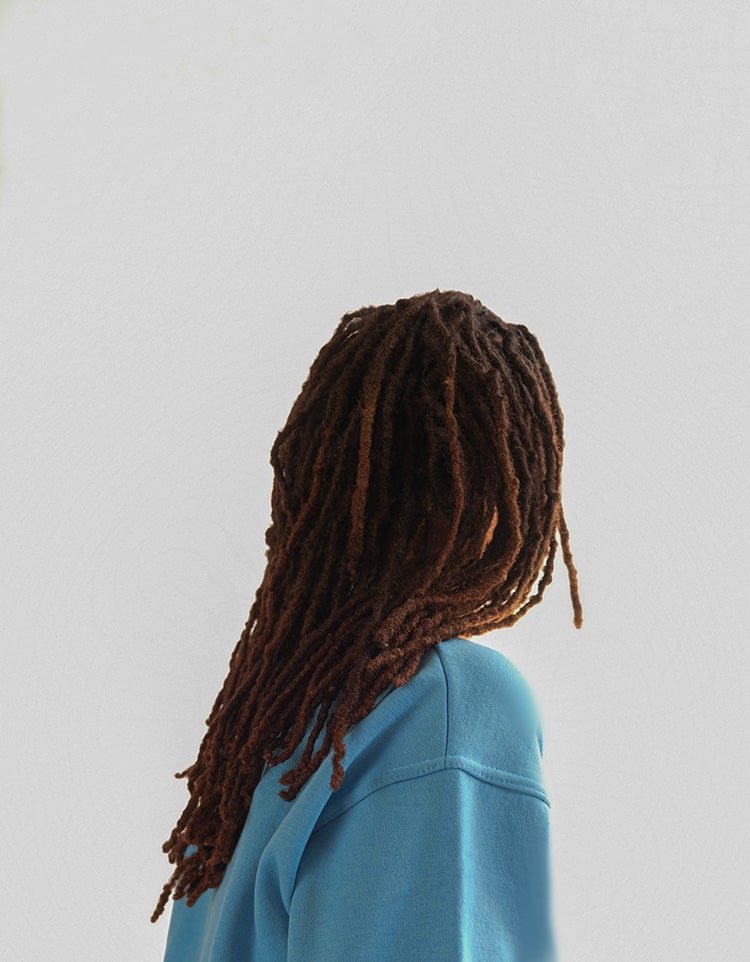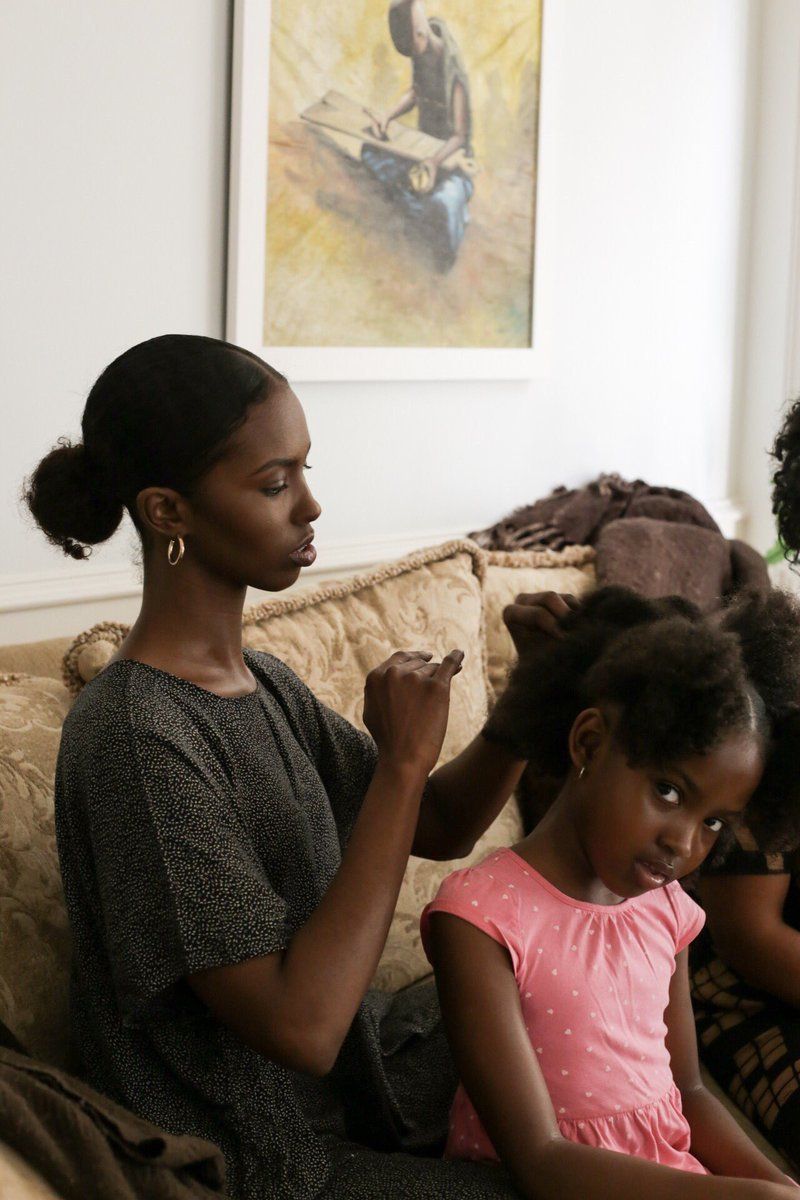Loc Size Chart: What Size Locs are best for your child?

There are many things to consider when starting your Child's Loc journey. One of the most critical factors before starting locs, aside from your parting system, is determining an appropriate size. That's why a Loc Size Chart is a necessity. Size matters for many things, but when discussing Locs, identifying and understanding the proper loc size is essential in your child's loc journey. This article will discuss different factors when determining the appropriate size locs for your child or yourself.

Size Matters
As shared above, size matters when discussing locs. It would be best if you kept in mind the density and thickness of your hair when examining the loc size chart. Throughout your child's loc journey, it's vital to understand locs compact. Loc compacting means that your locs will become thinner as they mature. With this in mind, it's essential to understand that if you start small, you'll end even smaller in most cases.
When changing our hairstyles, we typically want to achieve a specific look. The desired look is an excellent point of reference, but consider the texture, density, and curl pattern of your hair to prevent any future concerns and breakage as your locs grow. Before discussing, what to consider when determining your Loc to Part Ratio, we'll need to review the most common size of loc types by reviewing the Loc Chart Size.
The Loc Chart Size
As hairstyles continue to evolve, we see many variations of Locs. The most common loc sizes are the following;
The differentiating factor between these loc types is the amount/size of the locs and the process of obtaining the styles.
Sisterlocs
Sisterlocs are the smallest loc type and can range in size. Sizes of Sisterlocs can vary from small, medium, and large. Unlike the additional loc types discussed below, Sisterlocs often require a unique interlocking tool for installation and are recommended to be installed by a professional. Installation is estimated to take between 24-48hrs depending on the stylist, hair density/length, etc. Dependent on hair density, you can have anywhere from 400 to 800 locs. Because of this, maintenance is recommended every 4-6 weeks.
Microlocs
Microlocs sizing falls in-between Sisterlocs and Traditional Locs. Said to measure smaller than the diameter of a pencil, Microlocs require little to no training to achieve. Like traditional locs, you can start this loc type with twists, braids, or coils and apply wax to facilitate the locking process. Compared to Sisterlocs, maintenance is recommended every 4-8 weeks, depending on hair growth, and only 2-4 hrs to install. For fullness, expect anywhere between 150-300 microlocs.
Traditional Locs
Traditional locs are one of the most popular loc styles due to the minimum maintenance required. Traditional loc sizes vary greatly but typically are 10mm in diameter or larger. The locs recommended for this style vary but can range anywhere from 20-80. Remember that the fewer locs you have, the thicker your hair will be and vice versa.
Freeform Locs
Another low-maintenance loc style would be Freeform locs. Freeform locs are locs that form naturally over time. Due to this approach, installation isn't necessary as freeform locs require little twisting and manipulation. The free formation of this loc type results in a range in the number of locs formed.
Loc Parting Systems: Which is best?
Your loc parting system is how you section your locs at the start of your loc journey. Your parting system will depend on the size selected, as indicated by the Loc Size Chart. Your parting system is the foundation for how your locs fall. There are a lot of variable names for the different partings you can achieve.
- grid(square) or brick laid
- C-Shape / Fan Shape
- freestyle or organic
- Diamond / Triangle
In addition to dictating how your locs fall, your parting system will also affect how much scalp is showing.
- Grid (square) or brick laid shows more scalp than the other parting styles, as they lay between each other. The grid/brick style is more uniform, resulting in more consistent loc thickness throughout your hair.
- C-Shape / Fan Shape is a more natural approach to parting. It allows for framing around the face. The parts are close together, resulting in locs lying on each other.
- The freestyle or organic parting system produces more circular-shaped sections. No tools are required to achieve this parting style, resulting in a fuller appearance as less scalp shows.
- Diamond / Triangle provides a complete look but with fewer locs. Unlike the other parting systems discussed, this is not a DIY parting system. To achieve the Diamond/Triangle parting style, you create diamond-shaped parts in a round pattern throughout the hair.
Loc to Part Ratio
After assessing the loc style you desire and understanding the range of locs needed to achieve said type, you'll need to determine your Loc to Part ratio. Choosing your loc to part ratio is dependent on your hair density. If your loc to part ratio isn't correctly selected, you'll subject yourself to breakage as your locs mature. Often, if locs aren't installed by a Loctician determining a good loc to part ratio will be trial and error. Typically it's recommended to start with a dime-size parting and assess from there. For many people, restarting their loc journey is necessary after realizing their loc to part ratio is skewed. It's all a matter of truly understanding your hair density, curl type, and the overall look you are trying to achieve to nail your desired loc-to-part ratio.
Choosing the right Loc Size
So, as you can see, choosing the right loc size depends on many things. Outside of referring to the Loc Size Chart and understanding different parting systems, there are a few additional factors to consider. Factors such as time and money.
- Time - Locs are widely known as a low-maintenance hairstyle which is why people seek them. If this is your reason for pursuing this hairstyle, it's important to note that they still require a time commitment. There are many maintenance methods to retain your locs. A certified Loctician can perform these methods, and based on your selected Loc style, your recommendation for maintenance can vary between 4-8 weeks. Even if you complete your maintenance yourself, you will need to consider how many locs you will need to maintain throughout your journey.
- Money - Even if you are installing your locs yourself, there is still an associated cost with loc maintenance, whether by purchasing products or seeking a Loctician to perform your retwist. The smaller your locs, the more you can expect to pay to maintain them and vice versa. As with any hairstyle, you must exercise a proper hair regimen to ensure the overall health of the crown.
Satin Loc Caps
Lastly, taking care of Locs is essential. Implementing a loc regimen in addition to protective headwraps such as a Satin Loc Cap or Loc Bonnet will ensure the maintenance of your locs. A Satin Loc Cap or Loc Bonnet is a longer satin-lined bonnet allowing room for locs to fall comfortably. Like with Satin Bonnets or Satin Durags, covering your locs with one of these products as you sleep will help retain moisture in your hair. Satin Loc Caps or Bonnets impact the health of your hair and helps in the maturity and formation of locs, as discussed above.
Before embarking on your child's or your loc journey, there's much to consider. Refer to the Loc Size Chart and different parting systems to understand how to achieve your desired style. Your loc journey can be a challenging yet awakening journey. As with all hairstyles, it's most important to consider the factors such as density and curl type of your hair to achieve your desired results. Lastly, ensure that once you install this style, you can use a Loc Cap or Loc Bonnet to maintain your locs.




Comments